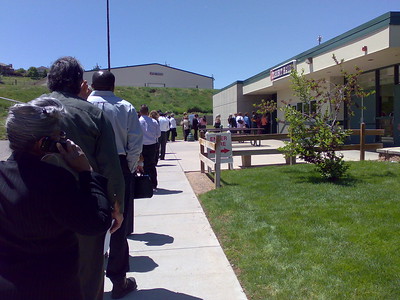Enrollment at the nation’s community colleges was up 4.4% over last year, according to data collected by the National Student Clearinghouse. Although much has been made of dual enrollment lately, a significant portion of the fall enrollment increase came from older workers. Enrollment growth among older students was about as large as the enrollment growth among traditional college students.
What is driving this and what does it mean? Older workers face a growing number of challenges related to both work and retirement. A recent report from researchers at the Schwartz Center for Economic Policy Analysis (SCEPA) at The New School in New York City found that in the aggregate, workers over 50 are prepared neither to retire nor remain in the workforce. In fact, nearly one quarter of all currently unemployed people are older workers. Yet, the lack of preparation for retirement compels these workers to remain on the job or in increasingly long job searches.
In the past, aging workers remaining in the workforce may not have been ideal for employees, volume number of workers who have exited the workforce has created worker shortages in many employment sectors. For workers who need to remain in the workforce, returning to school may be the best way to remain employed, and stabilize or improve their earnings.
Unfortunately, aging workers still experience longer periods of unemployment and underemployment, in part because they either do not possess the skills employers look for, or they must overcome the perception that they don’t have marketable skills.
Providing older workers with new skills is essential
There is no doubt that some older workers are financially unprepared to retire. In a 2022 CNBC survey, 56% of participants said they were not prepared to retire comfortably. Nearly half of all American workers (regardless of age) have no access to a retirement plan through their employers. Despite the fact that retirement savings plans are widely available to workers independent of their employment, being able to open a retirement savings account doesn’t mean that people have the requisite knowledge or income to take advantage of the opportunity.
Community colleges could be doing much more to ensure that aging workers who must remain in the workforce for financial reasons have marketable skills that employers are looking for. It would not only help these workers return to the workforce, but also help employers find workers to fill the millions of currently vacant positions.
Services for these students could include career counseling; short-term certificates to augment education and experience they already possess; and even retirement planning. Non-credit programs could assist aging workers who have either lost their jobs or are in danger of losing their jobs to make an educational plan to help them remain viable in the workforce.
Programs like this would be much more valuable to Washtenaw County than -say – an esports program or online education programs for out of district and out of state residents that generate workers for employers elsewhere. As taxpayers, we’re paying for this. Which approach better supports Washtenaw County?
Photo Credit: Paul Swansen , via Flickr














